- Home
- J. R. R. Tolkien
Tree and Leaf Page 7
Tree and Leaf Read online
Page 7
But in God’s kingdom the presence of the greatest does not depress the small. Redeemed Man is still man. Story, fantasy, still go on, and should go on. The Evangelium has not abrogated legends; it has hallowed them, especially the ‘happy ending’. The Christian has still to work, with mind as well as body, to suffer, hope, and die; but he may now perceive that all his bents and faculties have a purpose, which can be redeemed. So great is the bounty with which he has been treated that he may now, perhaps, fairly dare to guess that in Fantasy he may actually assist in the effoliation and multiple enrichment of creation. All tales may come true; and yet, at the last, redeemed, they may be as like and as unlike the forms that we give them as Man, finally redeemed, will be like and unlike the fallen that we know.
NOTES
A (see here)
The very root (not only the use) of their ‘marvels’ is satiric, a mockery of unreason; and the ‘dream’ element is not a mere machinery of introduction and ending, but inherent in the action and transitions. These things children can perceive and appreciate, if left to themselves. But to many, as it was to me, Alice is presented as a fairy-story and while this misunderstanding lasts, the distaste for the dream-machinery is felt. There is no suggestion of dream in The Wind in the Willows. ‘The Mole had been working very hard all the morning, spring-cleaning his little house.’ So it begins, and that correct tone is maintained. It is all the more remarkable that A. A. Milne, so great an admirer of this excellent book, should have prefaced to his dramatised version a ‘whimsical’ opening in which a child is seen telephoning with a daffodil. Or perhaps it is not very remarkable, for a perceptive admirer (as distinct from a great admirer) of the book would never have attempted to dramatise it. Naturally only the simpler ingredients, the pantomime, and the satiric beast-fable elements, are capable of presentation in this form. The play is, on the lower level of drama, tolerably good fun, especially for those who have not read the book; but some children that I took to see Toad of Toad Hall brought away as their chief memory nausea at the opening. For the rest they preferred their recollections of the book.
B (see here)
Of course, these details, as a rule, got into the tales, even in the days when they were real practices, because they had a story-making value. If I were to write a story in which it happened that a man was hanged, that might show in later ages, if the story survived – in itself a sign that the story possessed some permanent, and more than local or temporary, value – that it was written at a period when men were really hanged, as a legal practice. Might: the inference would not, of course, in that future time be certain. For certainty on that point the future inquirer would have to know definitely when hanging was practised and when I lived. I could have borrowed the incident from other times and places, from other stories; I could simply have invented it. But even if this inference happened to be correct, the hanging-scene would only occur in the story, (a) because I was aware of the dramatic, tragic, or macabre force of this incident in my tale, and (b) because those who handed it down felt this force enough to make them keep the incident in. Distance of time, sheer antiquity and alien-ness, might later sharpen the edge of the tragedy or the horror; but the edge must be there even for the elvish hone of antiquity to whet it. The least useful question, therefore, for literary critics at any rate, to ask or to answer about Iphigeneia, daughter of Agamemnon, is: Does the legend of her sacrifice at Aulis come down from a time when human-sacrifice was commonly practised?
I say only ‘as a rule’, because it is conceivable that what is now regarded as a ‘story’ was once something different in intent: e.g. a record of fact or ritual. I mean ‘record’ strictly. A story invented to explain a ritual (a process that is sometimes supposed to have frequently occurred) remains primarily a story. It takes form as such, and will survive (long after the ritual evidently) only because of its story-values. In some cases details that now are notable merely because they are strange may have once been so everyday and unregarded that they were slipped in casually: like mentioning that a man ‘raised his hat’, or ‘caught a train’. But such casual details will not long survive change in everyday habits. Not in a period of oral transmission. In a period of writing (and of rapid changes in habits) a story may remain unchanged long enough for even its casual details to acquire the value of quaintness or queerness. Much of Dickens now has this air. One can open today an edition of a novel of his that was bought and first read when things were so in everyday life as they are in the story, though these everyday details are now already as remote from our daily habits as the Elizabethan period. But that is a special modern situation. The anthropologists and folk-lorists do not imagine any conditions of that kind. But if they are dealing with unlettered oral transmission, then they should all the more reflect that in that case they are dealing with items whose primary object was story-building, and whose primary reason for survival was the same. The Frog King (see here) is not a Credo, nor a manual of totem-law: it is a queer tale with a plain moral.
C (see here)
As far as my knowledge goes, children who have an early bent for writing have no special inclination to attempt the writing of fairy-stories, unless that has been almost the sole form of literature presented to them; and they fail most markedly when they try. It is not an easy form. If children have any special leaning it is to Beast-fable, which adults often confuse with Fairy-story. The best stories by children that I have seen have been either ‘realistic’ (in intent), or have had as their characters animals and birds, who were in the main the zoomorphic human beings usual in Beast-fable. I imagine that this form is so often adopted principally because it allows a large measure of realism: the representation of domestic events and talk that children really know. The form itself is, however, as a rule, suggested or imposed by adults. It has a curious preponderance in the literature, good and bad, that is nowadays commonly presented to young children: I suppose it is felt to go with ‘Natural History’, semi-scientific books about beasts and birds that are also considered to be proper pabulum for the young. And it is reinforced by the bears and rabbits that seem in recent times almost to have ousted human dolls from the playrooms even of little girls. Children make up sagas, often long and elaborate, about their dolls. If these are shaped like bears, bears will be the characters of the sagas; but they will talk like people.
D (see here)
I was introduced to zoology and palaeontology (‘for children’) quite as early as to Faërie. I saw pictures of living beasts and of true (so I was told) prehistoric animals. I liked the ‘prehistoric’ animals best: they had at least lived long ago, and hypothesis (based on somewhat slender evidence) cannot avoid a gleam of fantasy. But I did not like being told that these creatures were ‘dragons’. I can still re-feel the irritation that I felt in childhood at assertions of instructive relatives (or their gift-books) such as these: ‘snowflakes are fairy jewels’, or ‘are more beautiful than fairy jewels’; ‘the marvels of the ocean depths are more wonderful than fairyland’. Children expect the differences they feel but cannot analyse to be explained by their elders, or at least recognized, not to be ignored or denied. I was keenly alive to the beauty of ‘Real things’, but it seemed to me quibbling to confuse this with the wonder of ‘Other things’. I was eager to study Nature, actually more eager than I was to read most fairy-stories; but I did not want to be quibbled into Science and cheated out of Faërie by people who seemed to assume that by some kind of original sin I should prefer fairy-tales, but according to some kind of new religion I ought to be induced to like science. Nature is no doubt a life-study, or a study for eternity (for those so gifted); but there is a part of man which is not ‘Nature’, and which therefore is not obliged to study it, and is, in fact, wholly unsatisfied by it.
E (see here)
There is, for example, in surrealism commonly present a morbidity or un-ease very rarely found in literary fantasy. The mind that produced the depicted images may often be suspected to have been in fact already morb
id; yet this is not a necessary explanation in all cases. A curious disturbance of the mind is often set up by the very act of drawing things of this kind, a state similar in quality and consciousness of morbidity to the sensations in a high fever, when the mind develops a distressing fecundity and facility in figure-making, seeing forms sinister or grotesque in all visible objects about it.
I am speaking here, of course, of the primary expression of Fantasy in ‘pictorial’ arts, not of ‘illustrations’; nor of the cinematograph. However good in themselves, illustrations do little good to fairy-stories. The radical distinction between all art (including drama) that offers a visible presentation and true literature is that it imposes one visible form. Literature works from mind to mind and is thus more progenitive. It is at once more universal and more poignantly particular. If it speaks of bread or wine or stone or tree, it appeals to the whole of these things, to their ideas; yet each hearer will give to them a peculiar personal embodiment in his imagination. Should the story say ‘he ate bread’, the dramatic producer or painter can only show ‘a piece of bread’ according to his taste or fancy, but the hearer of the story will think of bread in general and picture it in some form of his own. If a story says ‘he climbed a hill and saw a river in the valley below’, the illustrator may catch, or nearly catch, his own vision of such a scene; but every hearer of the words will have his own picture, and it will be made out of all the hills and rivers and dales he has ever seen, but specially out of The Hill, The River, The Valley which were for him the first embodiment of the word.
F (see here)
I am referring, of course, primarily to fantasy of forms and visible shapes. Drama can be made out of the impact upon human characters of some event of Fantasy, or Faërie, that requires no machinery, or that can be assumed or reported to have happened. But that is not fantasy in dramatic result; the human characters hold the stage and upon them attention is concentrated. Drama of this sort (exemplified by some of Barrie’s plays) can be used frivolously, or it can be used for satire, or for conveying such ‘messages’ as the playwright may have in his mind – for men. Drama is anthropocentric. Fairy-story and Fantasy need not be. There are, for instance, many stories telling how men and women have disappeared and spent years among the fairies, without noticing the passage of time, or appearing to grow older. In Mary Rose Barrie wrote a play on this theme. No fairy is seen. The cruelly tormented human beings are there all the time. In spite of the sentimental star and the angelic voices at the end (in the printed version) it is a painful play, and can easily be made diabolic: by substituting (as I have seen it done) the elvish call for ‘angel voices’ at the end. The non-dramatic fairy-stories, in so far as they are concerned with the human victims, can also be pathetic or horrible. But they need not be. In most of them the fairies are also there, on equal terms. In some stories they are the real interest. Many of the short folk-lore accounts of such incidents purport to be just pieces of ‘evidence’ about fairies, items in an agelong accumulation of ‘lore’ concerning them and the modes of their existence. The sufferings of human beings who come into contact with them (often enough, wilfully) are thus seen in quite a different perspective. A drama could be made about the sufferings of a victim of research in radiology, but hardly about radium itself. But it is possible to be primarily interested in radium (not radiologists) – or primarily interested in Faërie, not tortured mortals. One interest will produce a scientific book, the other a fairy-story. Drama cannot well cope with either.
G (see here)
The absence of this sense is a mere hypothesis concerning men of the lost past, whatever wild confusions men of today, degraded or deluded, may suffer. It is just as legitimate an hypothesis, and one more in agreement with what little is recorded concerning the thoughts of men of old on this subject, that this sense was once stronger. That fantasies which blended the human form with animal and vegetable forms, or gave human faculties to beasts, are ancient is, of course, no evidence for confusion at all. It is, if anything, evidence to the contrary. Fantasy does not blur the sharp outlines of the real world; for it depends on them. As far as our western, European, world is concerned, this ‘sense of separation’ has in fact been attacked and weakened in modern times not by fantasy but by scientific theory. Not by stories of centaurs or werewolves or enchanted bears, but by the hypotheses (or dogmatic guesses) of scientific writers who classed Man not only as ‘an animal’ – that correct classification is ancient – but as ‘only an animal’. There has been a consequent distortion of sentiment. The natural love of men not wholly corrupt for beasts, and the human desire to ‘get inside the skin’ of living things, has run riot. We now get men who love animals more than men; who pity sheep so much that they curse shepherds as wolves; who weep over a slain warhorse and vilify dead soldiers. It is now, not in the days when fairy-stories were begotten, that we get ‘an absence of the sense of separation’.
H (see here)
The verbal ending – usually held to be as typical of the end of fairy-stories as ‘once upon a time’ is of the beginning – ‘and they lived happily ever after’ is an artificial device. It does not deceive anybody. End-phrases of this kind are to be compared to the margins and frames of pictures, and are no more to be thought of as the real end of any particular fragment of the seamless Web of Story than the frame is of the visionary scene, or the casement of the Outer World. These phrases may be plain or elaborate, simple or extravagant, as artificial and as necessary as frames plain, or carved, or gilded. ‘And if they have not gone away they are there still.’ ‘My story is done – see there is a little mouse; anyone who catches it may make himself a fine fur cap of it.’ ‘And they lived happily ever after.’ ‘And when the wedding was over, they sent me home with little paper shoes on a causeway of pieces of glass.’
Endings of this sort suit fairy-stories, became such tales have a greater sense and grasp of the endlessness of the World of Story than most modern ‘realistic’ stories, already hemmed within the narrow confines of their own small time. A sharp cut in the endless tapestry is not unfittingly marked by a formula, even a grotesque or comic one. It was an irresistible development of modern illustration (so largely photographic) that borders should be abandoned and the ‘picture’ end only with the paper. This method may be suitable for photographs; but it is altogether inappropriate for the pictures that illustrate or are inspired by fairy-stories. An enchanted forest requires a margin, even an elaborate border. To print it conterminous with the page, like a ‘shot’ of the Rockies in Picture Post, as if it were indeed a ‘snap’ of fairyland or a ‘sketch by our artist on the spot’, is a folly and an abuse.
As for the beginnings of fairy-stories: one can scarcely improve on the formula Once upon a time. It has an immediate effect. This effect can be appreciated by reading, for instance, the fairy-story The Terrible Head in the Blue Fairy Book. It is Andrew Lang’s own adaptation of the story of Perseus and the Gorgon. It begins ‘once upon a time’, and it does not name any year or land or person. Now this treatment does something which could be called ‘turning mythology into fairy-story’. I should prefer to say that it turns high fairy-story (for such is the Greek tale) into a particular form that is at present familiar in our land: a nursery or ‘old wives’ form. Namelessness is not a virtue but an accident, and should not have been imitated; for vagueness in this regard is a debasement, a corruption due to forgetfulness and lack of skill. But not so, I think, the timelessness. That beginning is not poverty-stricken but significant. It produces at a stroke the sense of a great uncharted world of time.
MYTHOPOEIA
To one who said that myths were lies and therefore worthless, even though ‘breathed through silver’.
Philomythus to Misomythus
You look at trees and label them just so,
(for trees are ‘trees’, and growing is ‘to grow’);
you walk the earth and tread with solemn pace
one of the many minor globes of Space:
a star’s a star, some matter in a ball
compelled to courses mathematical
amid the regimented, cold, Inane,
where destined atoms are each moment slain.
At bidding of a Will, to which we bend
(and must), but only dimly apprehend,
great processes march on, as Time unrolls
from dark beginnings to uncertain goals;
and as on page o’erwritten without clue,
with script and limning packed of various hue,
an endless multitude of forms appear,
some grim, some frail, some beautiful, some queer,
each alien, except as kin from one
remote Origo, gnat, man, stone, and sun.
God made the petreous rocks, the arboreal trees,
tellurian earth, and stellar stars, and these
homuncular men, who walk upon the ground
with nerves that tingle touched by light and sound.

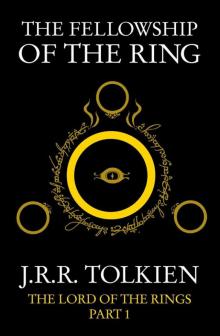 The Fellowship of the Ring
The Fellowship of the Ring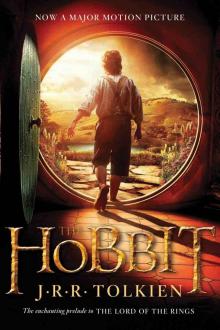 The Hobbit
The Hobbit The Two Towers
The Two Towers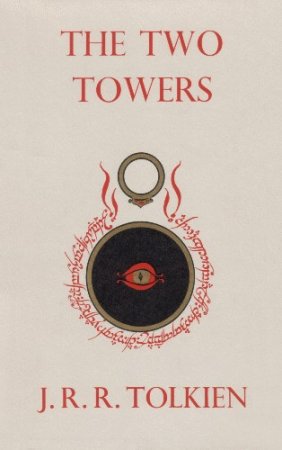 The Return of the King
The Return of the King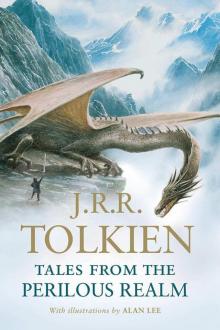 Tales From the Perilous Realm
Tales From the Perilous Realm Leaf by Niggle
Leaf by Niggle The Silmarillon
The Silmarillon The Book of Lost Tales, Part Two
The Book of Lost Tales, Part Two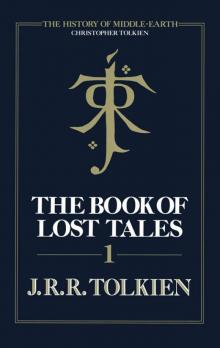 The Book of Lost Tales, Part One
The Book of Lost Tales, Part One The Book of Lost Tales 2
The Book of Lost Tales 2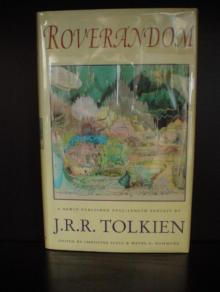 Roverandom
Roverandom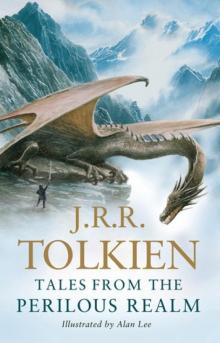 Smith of Wootton Major
Smith of Wootton Major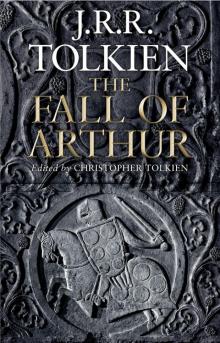 The Fall of Arthur
The Fall of Arthur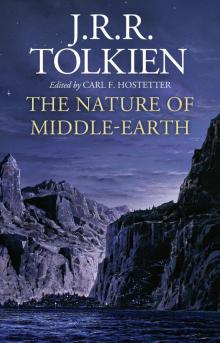 The Nature of Middle-earth
The Nature of Middle-earth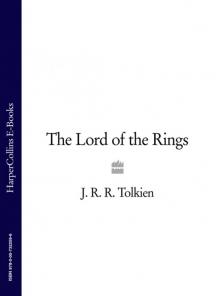 The Lord of the Rings: The Fellowship of the Ring, The Two Towers, The Return of the King
The Lord of the Rings: The Fellowship of the Ring, The Two Towers, The Return of the King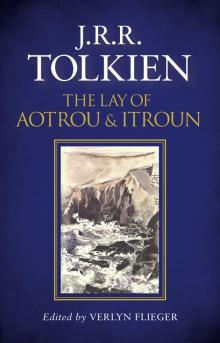 The Lay of Aotrou and Itroun
The Lay of Aotrou and Itroun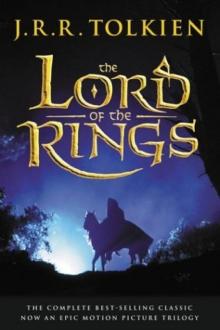 lord_rings.qxd
lord_rings.qxd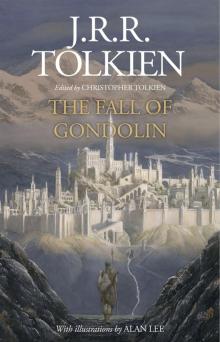 The Fall of Gondolin
The Fall of Gondolin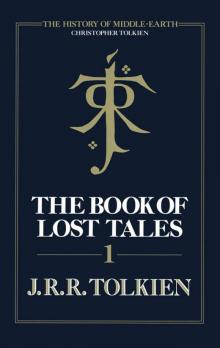 The Book of Lost Tales, Part 1
The Book of Lost Tales, Part 1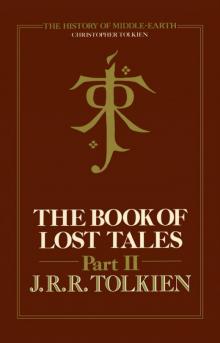 The Book of Lost Tales, Part 2
The Book of Lost Tales, Part 2 The Lord of the Rings
The Lord of the Rings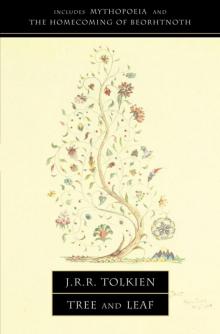 Tree and Leaf
Tree and Leaf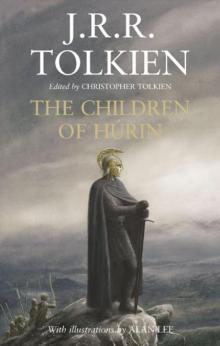 The Children of Húrin
The Children of Húrin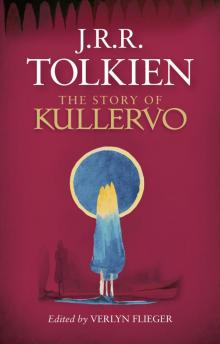 The Story of Kullervo
The Story of Kullervo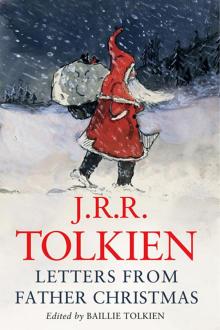 Letters From Father Christmas
Letters From Father Christmas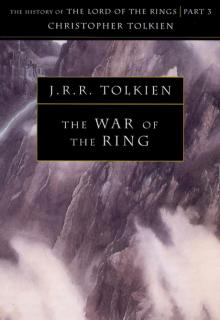 The History of Middle Earth: Volume 8 - The War of the Ring
The History of Middle Earth: Volume 8 - The War of the Ring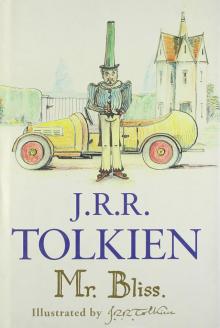 Mr. Bliss
Mr. Bliss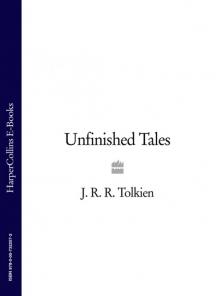 Unfinished Tales
Unfinished Tales The Adventures of Tom Bombadil
The Adventures of Tom Bombadil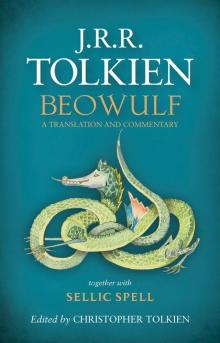 Beowulf: A Translation and Commentary, together with Sellic Spell
Beowulf: A Translation and Commentary, together with Sellic Spell The Silmarillion
The Silmarillion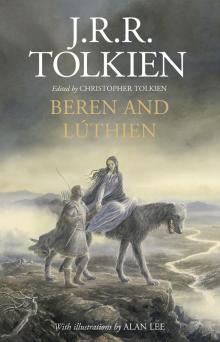 Beren and Lúthien
Beren and Lúthien